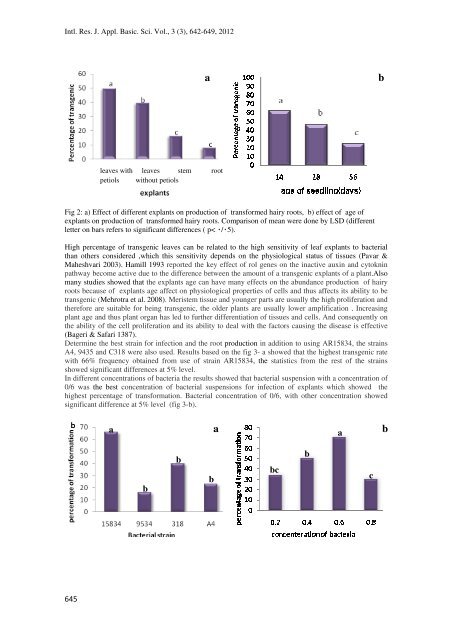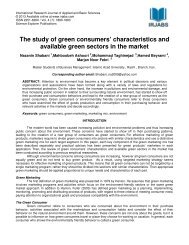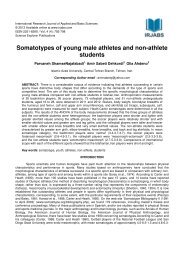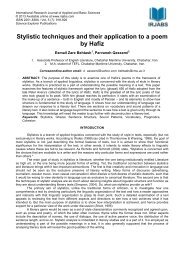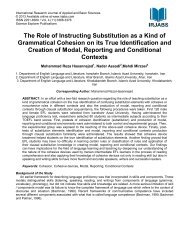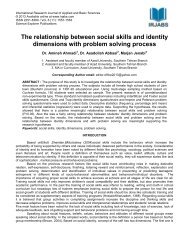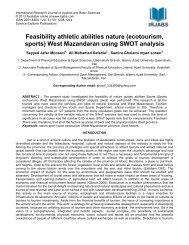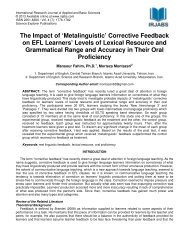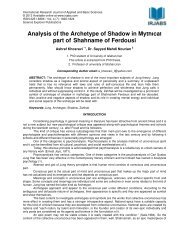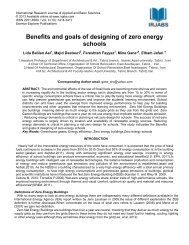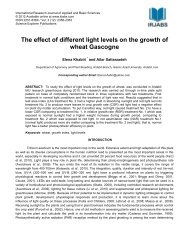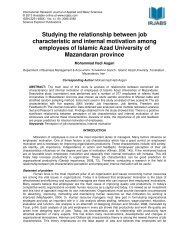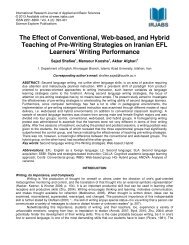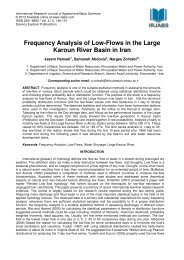Hairy roots induction from Portulaca oleracea using ... - irjabs.com
Hairy roots induction from Portulaca oleracea using ... - irjabs.com
Hairy roots induction from Portulaca oleracea using ... - irjabs.com
You also want an ePaper? Increase the reach of your titles
YUMPU automatically turns print PDFs into web optimized ePapers that Google loves.
Intl. Res. J. Appl. Basic. Sci. Vol., 3 (3), 642-649, 2012ableaves with leaves stem rootpetiols without petiolsFig 2: a) Effect of different explants on production of transformed hairy <strong>roots</strong>, b) effect of age ofexplants on production of transformed hairy <strong>roots</strong>. Comparison of mean were done by LSD (differentletter on bars refers to significant differences ( p< /5).High percentage of transgenic leaves can be related to the high sensitivity of leaf explants to bacterialthan others considered ,which this sensitivity depends on the physiological status of tissues (Pavar &Maheshvari 2003). Hamill 1993 reported the key effect of rol genes on the inactive auxin and cytokninpathway be<strong>com</strong>e active due to the difference between the amount of a transgenic explants of a plant.Alsomany studies showed that the explants age can have many effects on the abundance production of hairy<strong>roots</strong> because of explants age affect on physiological properties of cells and thus affects its ability to betransgenic (Mehrotra et al. 2008). Meristem tissue and younger parts are usually the high proliferation andtherefore are suitable for being transgenic, the older plants are usually lower amplification . Increasingplant age and thus plant organ has led to further differentiation of tissues and cells. And consequently onthe ability of the cell proliferation and its ability to deal with the factors ca<strong>using</strong> the disease is effective(Bageri & Safari 1387).Determine the best strain for infection and the root production in addition to <strong>using</strong> AR15834, the strainsA4, 9435 and C318 were also used. Results based on the fig 3- a showed that the highest transgenic ratewith 66% frequency obtained <strong>from</strong> use of strain AR15834, the statistics <strong>from</strong> the rest of the strainsshowed significant differences at 5% level.In different concentrations of bacteria the results showed that bacterial suspension with a concentration of0/6 was the best concentration of bacterial suspensions for infection of explants which showed thehighest percentage of transformation. Bacterial concentration of 0/6, with other concentration showedsignificant difference at 5% level (fig 3-b). aaabbbbbcbc


